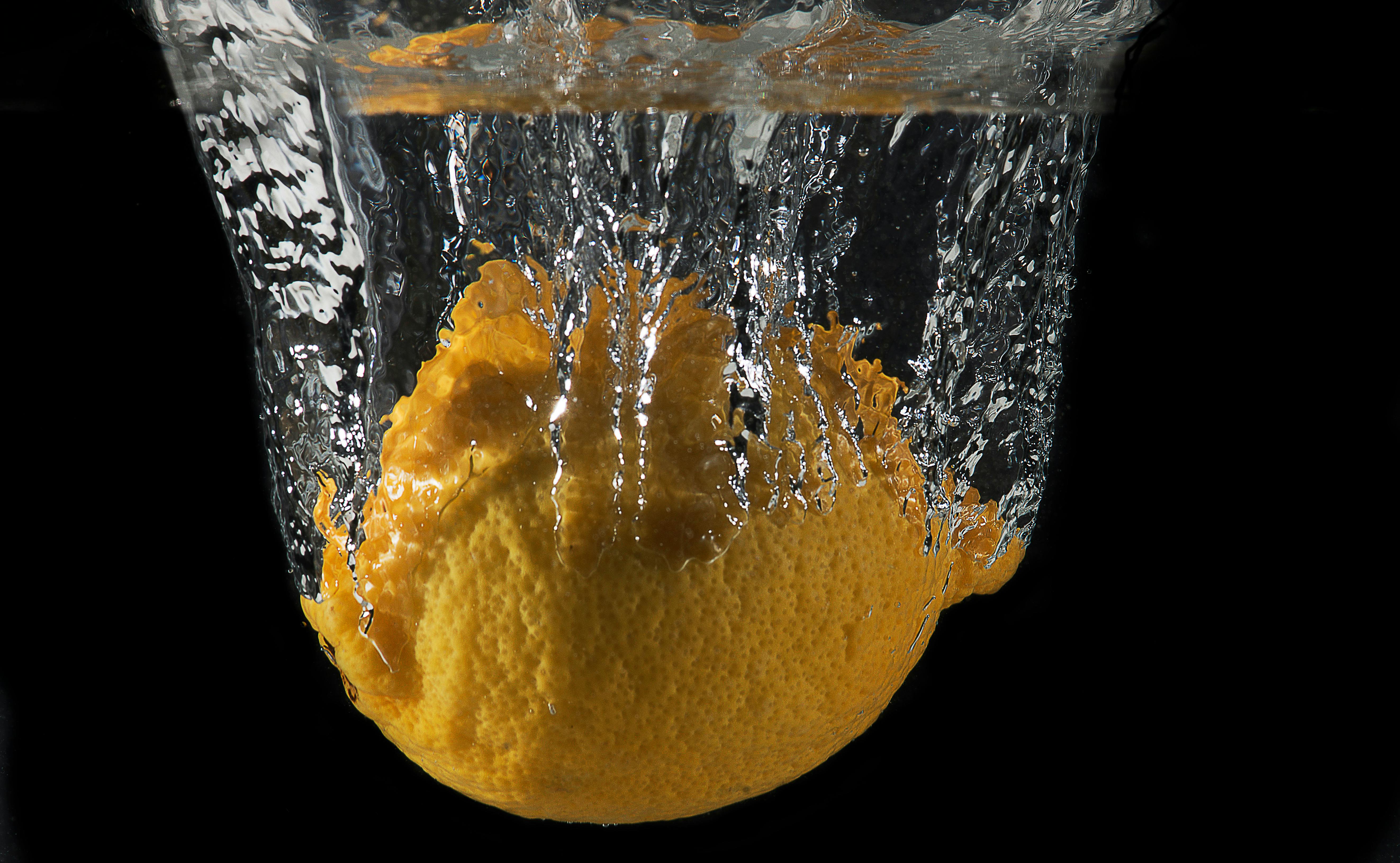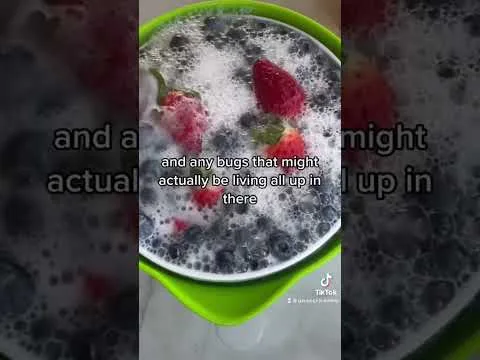Using baking soda to clean fruit is a great way to remove dirt, bacteria, and residue from the surface of your produce. Baking soda is a safe and natural cleaning agent that can help you maintain the quality and freshness of your fruits and vegetables. However, it is important to know how much baking soda to use when cleaning fruit in order to ensure that you get the best results. This guide will provide an overview of how much baking soda to use when cleaning fruit so that you can keep your produce healthy and fresh.The amount of baking soda needed to clean fruit will depend on the type and amount of fruit being cleaned. Generally, a ratio of 1 tablespoon of baking soda per quart of water is sufficient for cleaning most fruits.
The Benefits of Using Baking Soda to Clean Fruit
Cleaning fruits and vegetables is essential for maintaining good health and hygiene. While many people use detergents to clean the produce they bring home, baking soda is an effective and natural alternative. Baking soda has been proven to be safe and effective in killing germs, bacteria, and other contaminants that may be present on the skin of fruits and vegetables. It is also a great way to remove wax buildup from store-bought produce.
Using baking soda for cleaning fruits and vegetables has several benefits. It is a natural cleaner that does not contain harsh chemicals or toxins that can be absorbed into the skin of the produce. It also does not strip away essential vitamins, minerals, or nutrients from the food like chemical cleaners can do. Furthermore, it is a non-abrasive cleaner that will not damage delicate skins like those on berries or tomatoes.
Another benefit of using baking soda for cleaning fruits and vegetables is its cost-effectiveness. Baking soda costs much less than many chemical cleaners available in stores. Considering its effectiveness in cleaning produce, it provides a great value for money compared to other cleaners. Additionally, baking soda can be used multiple times before needing to be replaced.
Finally, using baking soda for cleaning fruits and vegetables is easy and convenient. All you need to do is dissolve one tablespoon of baking soda in one quart of water. Then submerge your produce in the solution for one minute before rinsing off with clean water. This simple method ensures that all contaminants are removed from your produce before consuming them.
In conclusion, using baking soda to clean fruits and vegetables provides several benefits including being a natural cleaner without harsh chemicals or toxins, cost-effectiveness compared to store-bought cleaners, as well as being an easy and convenient method for cleaning produce before consuming them.
How to Use Baking Soda To Clean Fruit
Cleaning fruit with baking soda is an easy and effective way to remove dirt, wax, and pesticide residue from the surface of fruits and vegetables. Baking soda is a mild abrasive that gently scrubs away surface contaminants without damaging the skin of the produce. Even better, it’s a natural disinfectant that can help kill bacteria and germs on the skin of your fruit. To use baking soda to clean your produce, all you need is a bowl of water, baking soda, and some fresh produce.
Start by filling a bowl with cold water. Then add about one tablespoon of baking soda for every two cups of water. Give it a stir until the baking soda has dissolved completely. Next, place the fruit or vegetables in the bowl and let them soak for at least five minutes. Once done soaking, take the produce out and rinse it off with cold water. You can use a soft brush or sponge to help scrub off any stubborn dirt or residue if needed.
After rinsing off your fruits or vegetables, take them out of the bowl and dry them off with a clean cloth or paper towel. That’s it! Your produce should now be free from dirt and contaminants. Baking soda is an incredibly versatile cleaning tool that can be used in many different ways around your home. Not only can you use it to clean fruit and vegetables but you can also use it to scrub sinks, tubs, countertops, tile floors and more!
Preparing the Baking Soda Solution to Clean Fruit
One of the most effective ways to clean fresh fruits and vegetables is to use a baking soda solution. Baking soda is a natural disinfectant and will help remove dirt, bacteria, and pesticides from the surface of your produce. The baking soda solution is easy to prepare and can be used to clean most kinds of fruits and vegetables. Here’s what you’ll need:
• 2 tablespoons of baking soda
• 1 gallon of water
Mix the two ingredients together in a large bowl or bucket, stirring until the baking soda is completely dissolved. Then you can fill up a sink or basin with the solution and submerge your fruit or vegetables in it for a few minutes. This will help loosen any dirt, grime, or residue that may be on their surface. After a few minutes, rinse off your produce with cool water and use a soft brush to scrub away any remaining residue. Finally, dry off your produce with a paper towel before eating or storing them.
Using this baking soda solution is an effective way to ensure that the fruits and vegetables you are consuming are clean and safe for eating. It also helps reduce your exposure to harmful pesticides which can have long-term health effects. Make sure to give all of your produce a thorough cleaning before eating it!
Baking Soda To Clean Fruit
Using baking soda to clean fruit is a simple and effective process that can help to protect against bacteria and other contaminants. Baking soda is a natural antiseptic and mild abrasive, making it an ideal choice for cleaning fruit. It is also a natural deodorant which helps to remove any unwanted smells from fruits. It is important to use the right type of baking soda when cleaning fruit in order to ensure the safety of the food.
The best type of baking soda to use for cleaning fruit is food grade baking soda, which has been specially formulated for use in food preparation. This type of baking soda is free from additives or preservatives, so it is safe for use on fruits. It also has a finer texture than regular baking soda, which makes it easier to apply evenly over the surface of the fruit without leaving any residue or abrasions.
When using baking soda to clean fruit, it should be mixed with some water in order to create a paste-like consistency. This paste should then be applied directly onto the surface of the fruit and left for several minutes before being rinsed off with clean water. Baking soda can also be used as an alternative to bleach or other harsh chemicals when washing fruits as it does not contain any harmful toxins or irritants that could potentially harm the skin or digestive system.
Overall, using baking soda to clean fruits is an easy and effective way to keep them safe from bacteria and other contaminants while still maintaining their freshness and flavor. It is important however, that only food grade baking soda is used in order to ensure safety when consuming fruits after they have been cleaned with this method.

How To Disinfect Fruit with Baking Soda?
Fruits are an essential part of a balanced and healthy diet. Unfortunately, they can also be a breeding ground for bacteria and germs if not properly sanitized. Fortunately, there is an easy and cost-effective way to disinfect your fruits and vegetables: baking soda! Baking soda is a natural disinfectant that is commonly used for cleaning and sanitizing surfaces, but it can also be used to clean fruits and vegetables. Here’s how you can use baking soda to disinfect your fruits:
Start by preparing a mixture of baking soda and water. Mix four teaspoons of baking soda with one gallon of warm water in a large bowl or container. Make sure the mixture is completely dissolved before proceeding.
Once the mixture is prepared, submerge the fruits in it for at least 5 minutes. This will allow the baking soda to penetrate the surface of the fruit and eliminate any bacteria or germs that may be present.
Once finished, rinse off the fruit thoroughly under running water. This will help remove any residue left behind by the baking soda solution.
Finally, dry off the fruit with a clean cloth or paper towel before storing it in your refrigerator or consuming it raw.
By following these simple steps you can easily disinfect your fruits and vegetables with baking soda, ensuring that they are safe to consume!
Potential Risks of Using Baking Soda To Clean Fruits
Baking soda is often used as a natural cleaning agent due to its mild abrasive and antiseptic properties. Many people may use it to clean fruits and vegetables, especially when they are not sure of the origin of the produce. However, using baking soda to clean fruits can come with risks and should be done with caution.
There is a potential risk of consuming too much sodium bicarbonate if it is not washed off thoroughly after cleaning fruits with baking soda. The high levels of sodium in baking soda can be dangerous when ingested in large amounts, leading to side effects such as nausea, vomiting, and abdominal cramps. It is important to rinse the fruits thoroughly with water after washing them with baking soda.
Another potential risk of using baking soda to clean fruits is that it may leave residue on the surface. This residue can accumulate bacteria or other contaminants that could cause food poisoning if consumed. Therefore, it is important to rinse off any residue after washing the fruits with baking soda and ensure that they are dried completely before eating them.
Finally, there is also a risk that baking soda can damage some types of delicate fruits such as raspberries or strawberries due to its abrasive nature. Therefore, caution should be taken when cleaning these types of fruits with baking soda as it may cause bruising or other damage.
In conclusion, while baking soda can be an effective natural cleaning agent for many surfaces including fruits and vegetables, there are potential risks associated with using it for this purpose. It is important to ensure that it is used cautiously and rinsed off thoroughly afterward so that any dangerous side effects or contamination from residue can be avoided.
Alternatives to Using Baking Soda To Clean Fruits
There are a few alternatives to using baking soda to clean fruits. Vinegar is one of the most commonly used cleaning agents. It can be mixed with water to create a cleaning solution that is effective at removing dirt, bacteria and other contaminants from fruits. Vinegar also has natural antibacterial properties which help keep fruits fresh and free from bacteria.
Another natural alternative is lemon juice. Lemon juice is a natural acid and it can be used as a cleaning agent for fruits. It works well for removing dirt and other contaminants from the surface of the fruit. Additionally, lemon juice has natural antibacterial properties which help keep the fruit fresh and free from bacteria.
Salt is also an effective alternative to baking soda when it comes to cleaning fruits. Salt mixed with water creates a cleaning solution that can remove dirt, bacteria and other contaminants from the surface of the fruit. Additionally, salt has natural antibacterial properties which can help keep the fruit fresh and free from bacteria.
Finally, there are several commercial products available that are specifically designed for cleaning fruits safely and effectively. These products usually contain ingredients such as vinegar or lemon juice which work together to remove dirt, bacteria and other contaminants while also helping to preserve freshness.

Conclusion
Baking soda is a great natural ingredient to use for cleaning fruit. It is safe for the environment, gentle on your skin, and effective at removing dirt and bacteria. However, it’s important to be careful when using baking soda to clean fruit so that you don’t damage or spoil the freshness of the produce. To achieve optimal results when cleaning fruits with baking soda, use a ratio of 1 teaspoon of baking soda per quart of water. Be sure to rinse the fruit thoroughly with water afterwards. With this simple but effective method, you can enjoy fresh and healthy fruits without worrying about harmful bacteria or pesticides.
Using baking soda to clean your fruit is a great way to keep your produce safe for consumption and free from harmful chemicals or bacteria. Give it a try next time you want to enjoy fresh and delicious fruit!



